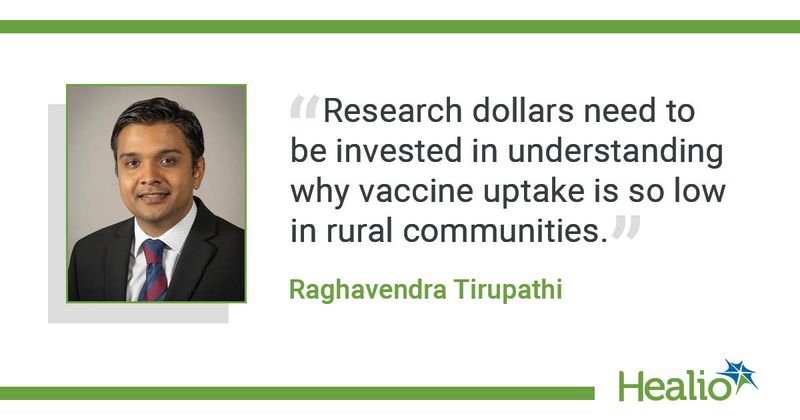Gastrointestinal outcomes prevalent among rural patients with COVID-19
Click Here to Manage Email Alerts
Gastrointestinal manifestations were prevalent among rural patients in Pennsylvania with COVID-19, with around a quarter reporting diarrhea — higher than in past studies — according to data reported in Open Forum Infectious Diseases.
The study, which examined characteristics of patients in six hospitals in rural and suburban Pennsylvania, also found that Hispanic individuals were disproportionately affected by the virus.

“This is the first study to our knowledge looking at the demographics, clinical characteristics and outcomes of COVID-19 in rural populations,” said Infectious Disease News Editorial Board Member Raghavendra Tirupathi, MD, FACP, medical director for Keystone Infectious Diseases/HIV, chair of infection prevention at Summit Health and clinical assistant professor of medicine at Penn State University School of Medicine.
“Rural communities are one of the most underrepresented populations in clinical studies,” Tirupathi told Healio. “Our attempt here is to provide a glimpse into how COVID-19 has impacted this underrepresented and many times underserved population prior to availability of current standard of care treatments. This study further highlights the fact that racial and ethnic minorities bear the brunt of the pandemic even more so in rural counties.”

Tirupathi and colleagues analyzed demographic, symptomatology, imaging and lab value information from 280 COVID-19 admissions between March and May of 2020 using electronic health records.
Diarrhea was reported in 25.4% of patients. Hispanic ethnicity was self-reported in only 9% of the community population, yet Hispanics accounted for 34% of total admissions. Although nursing home patients accounted for 10.1% of admissions, they accounted for 35.5% of total deaths.
“Many of the same COVID-19 issues seen in urban environments are seen in rural/suburban settings,” study investigator Michael Bohrn, MD, FACEP, FAAEM, vice president and chief academic officer at WellSpan Health, told Healio. “We should be alert for diarrhea or other gastrointestinal symptoms as a manifestation of COVID-19 and continue working to understand COVID-19 disparities in hospitalization rates and other outcomes related to ethnicity.”
Bohrn said that one of the study’s limitations was that the data primarily came from patients early in the pandemic.
“Treatment options have expanded since that time, and imaging and diagnostic protocols for COVID-19 patients have changed, along with oxygenation and ventilatory strategies,” Bohrn said. “Future studies centered around later time periods during the pandemic may help address this. It may also be useful to study ambulatory/outpatient populations for similar datapoints, where applicable.”
Tirupathi said there is an “urgent need to conduct research trials for diagnostics, therapeutics and vaccines in rural community hospitals.”
“We need to invest in building research infrastructure in these hospitals so as to help our patients have access to cutting-edge treatments through clinical trials,” he said. “Research dollars need to be invested in understanding why vaccine uptake is so low in rural communities.”

